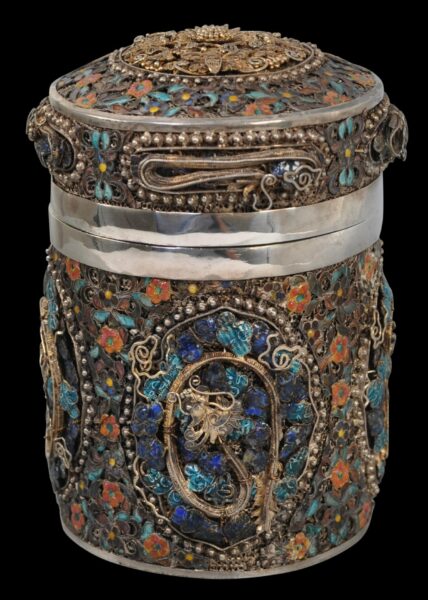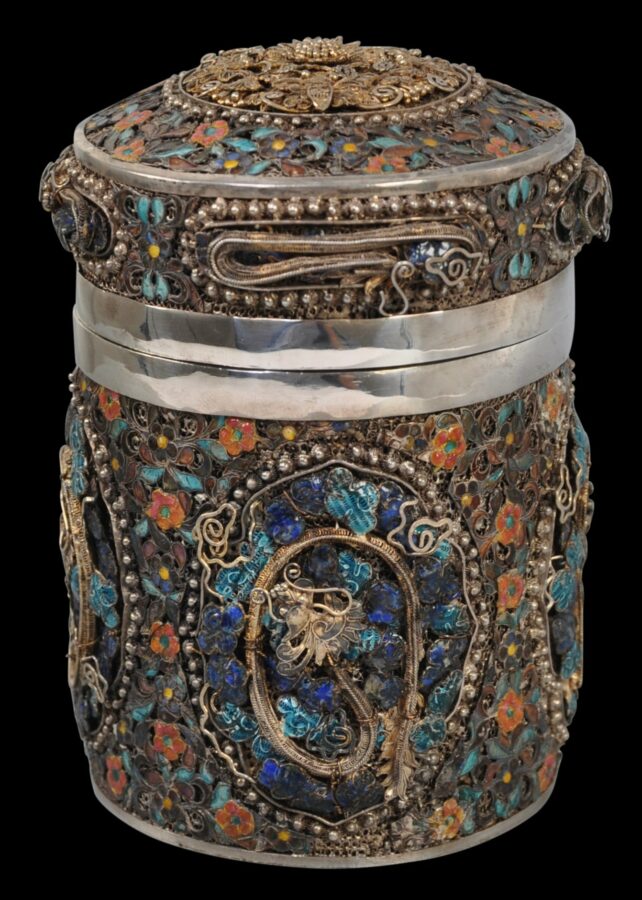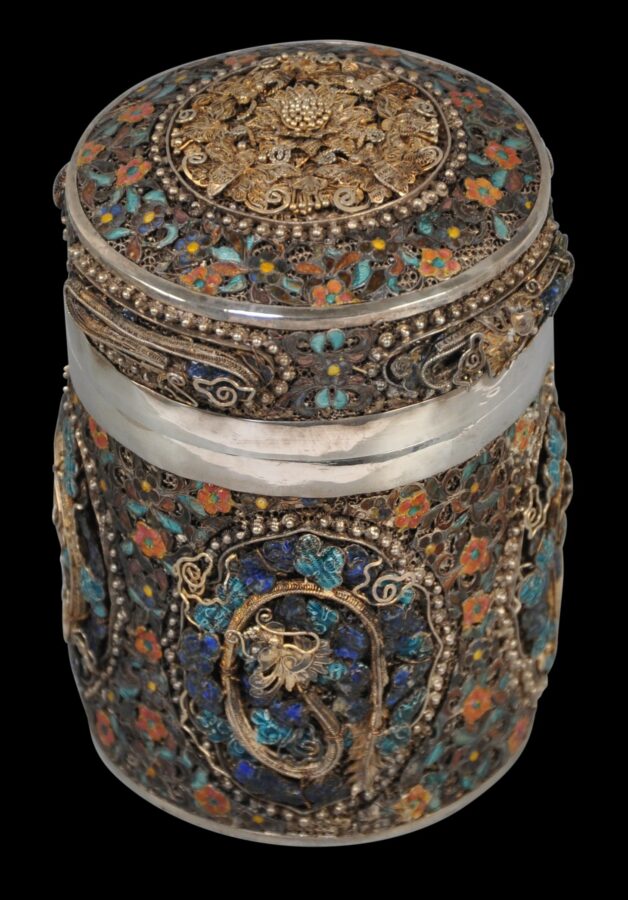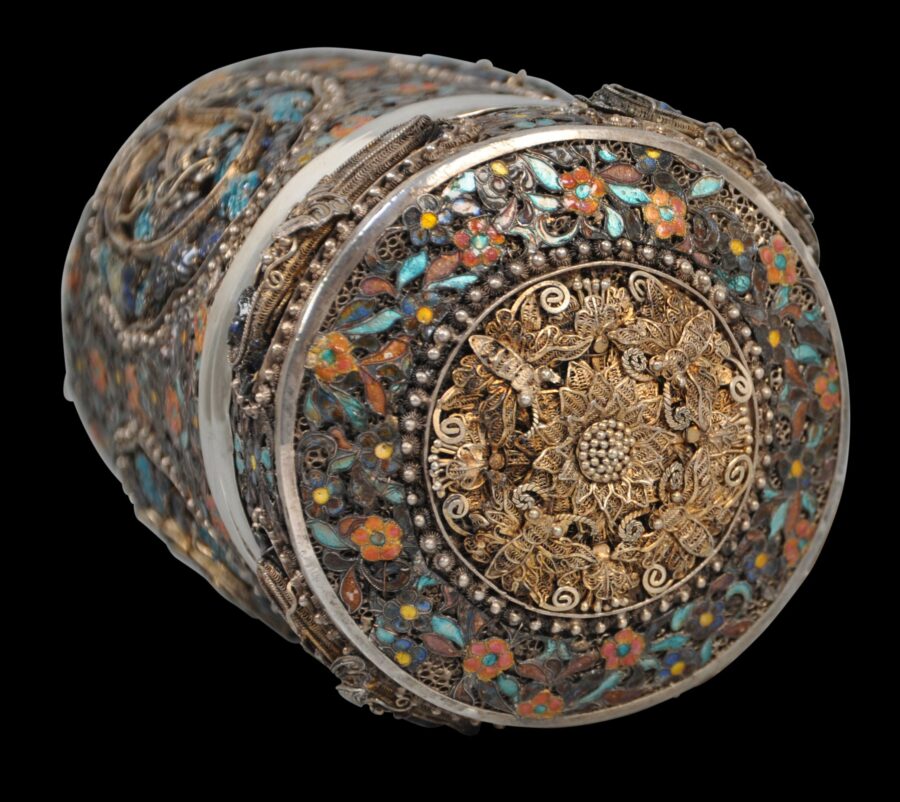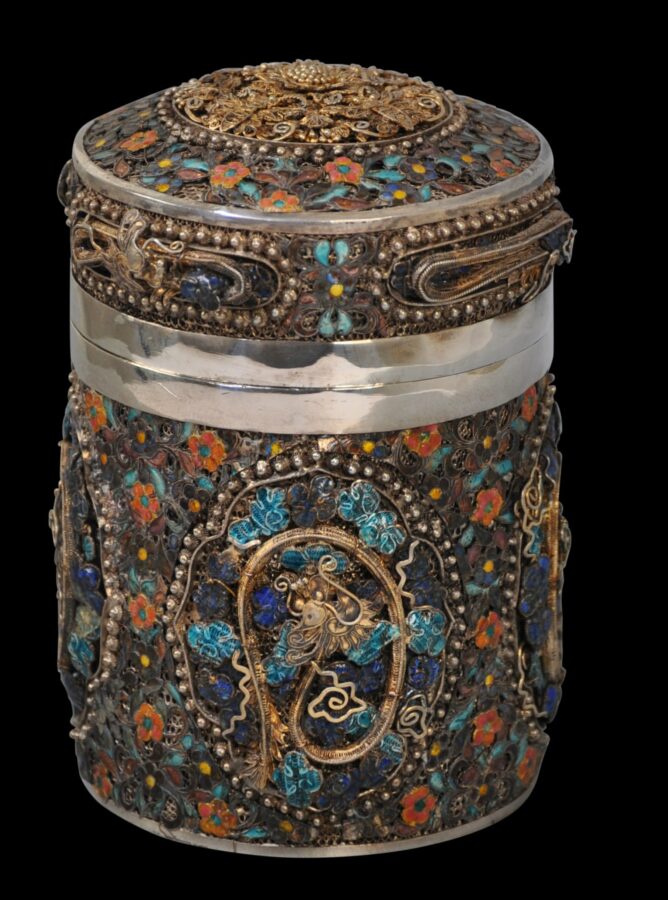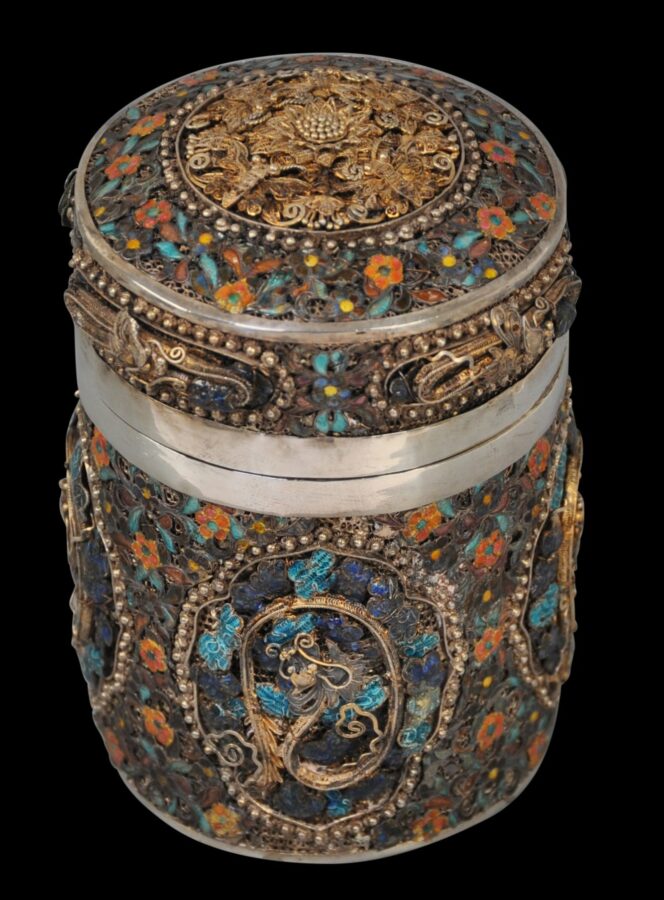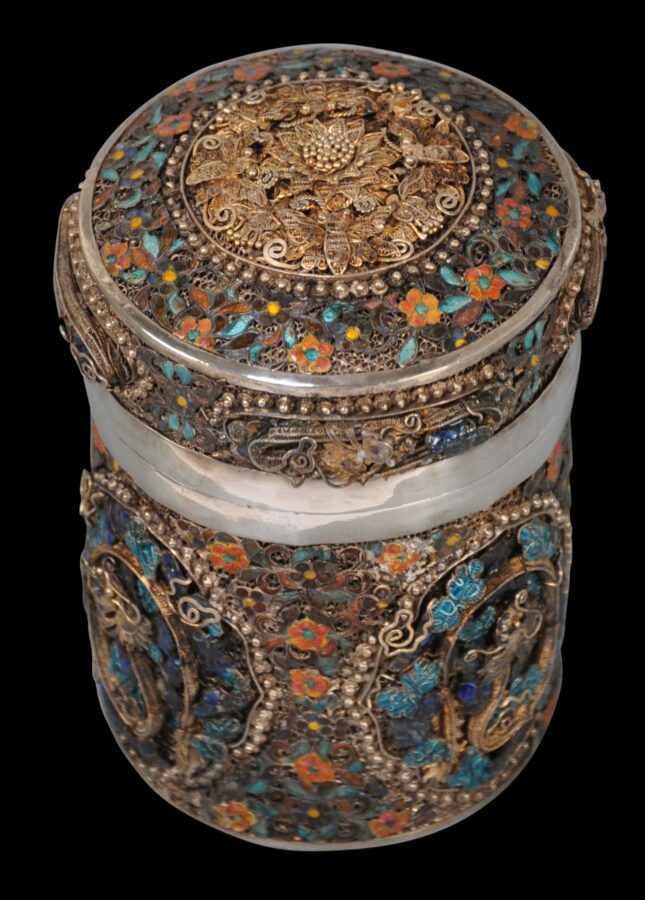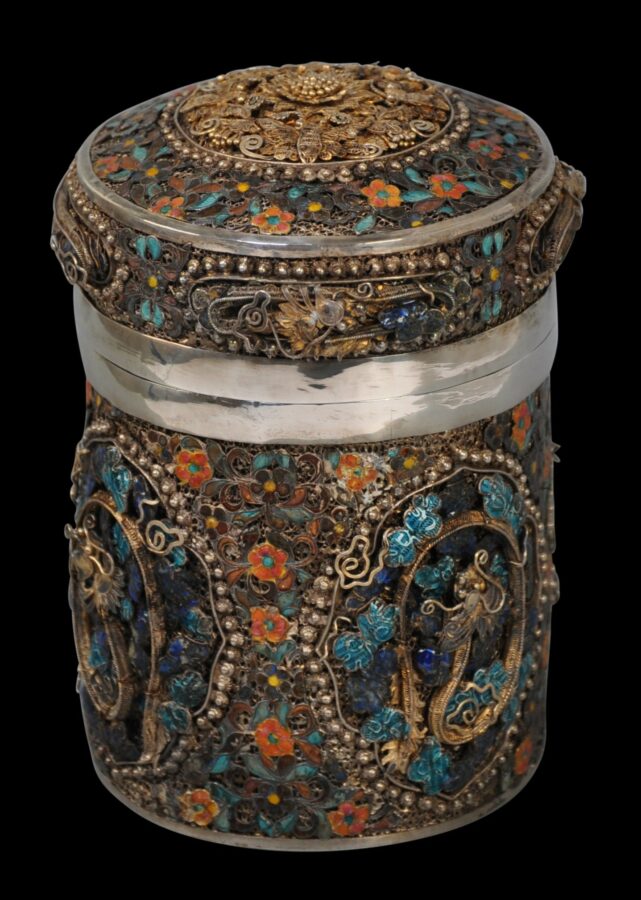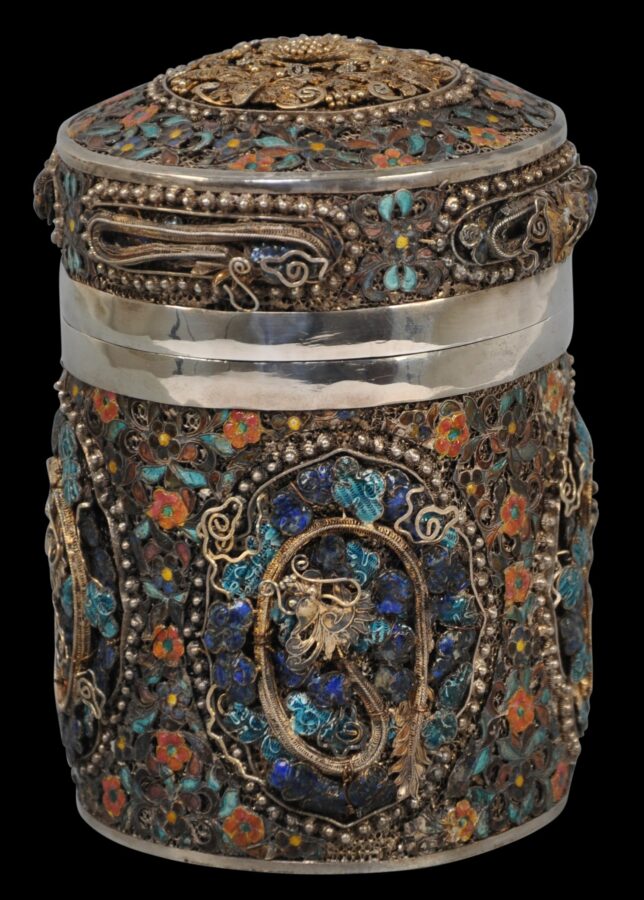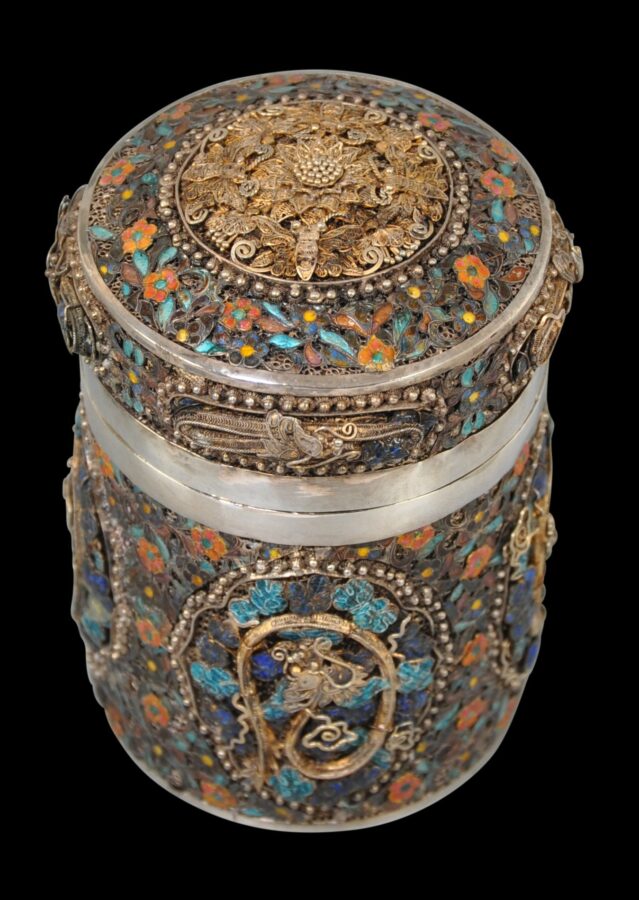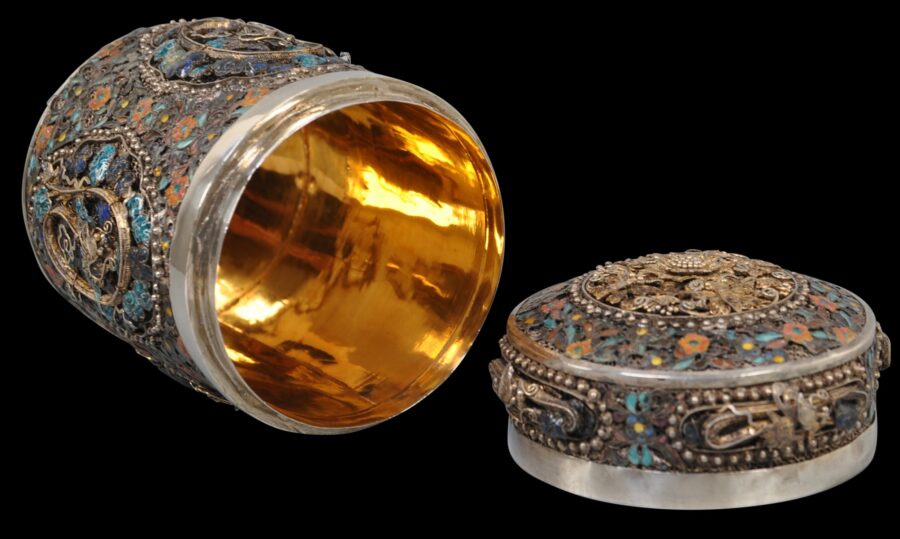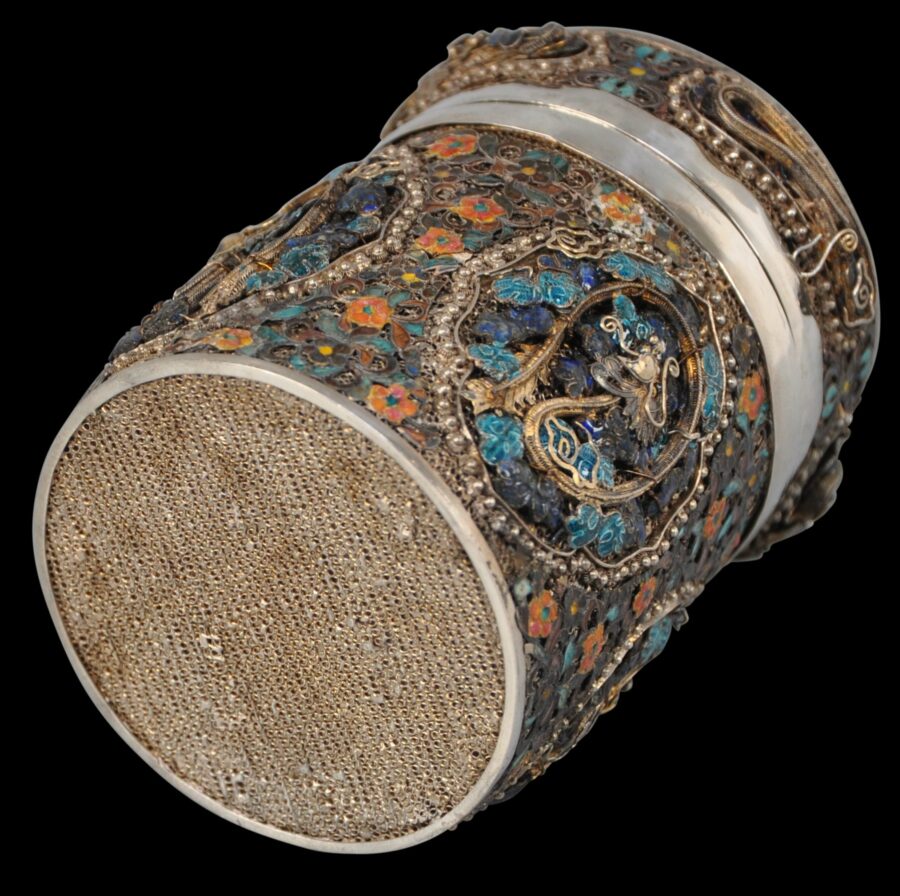This remarkable silver canister has solid silver walls but which have been decorated around the sides and over the domed cover with dense, fine silver filigree wire that has also been gilded and enamelled. The enamels are of many different colours and include turquoise-blue, orange, yellow and green.
The sides of the cannister are decorated with four oval cartouches each of which holds a gilded, curled dragon. Small and profuse enamelled flowers decorate the body between the cartouches. The sides of the cover are similarly decorated but with slender cartouches filled with curled gilded dragons.
The cover has a raised roundel of filigree and flattened wire work around a central flower all in filigree and with granulation work, and all gilded.
Even the base is decorated with silver filigree.
The interior is gilded.
The work clearly is Chinese in nature but it is not necessarily by Chinese smiths who operated in China. A silver filigree and enamelled vessel in the National Museum in Bangkok is attributed not to China but to Vietnam for example. Also, the gilded decoration to the cover is remarkably similar to gilded silver filigree work that was undertaken in the Palembang region, South Sumatra, Indonesia in the 18th and 19th centuries. This work can be seen on wedding necklaces used by the Straits Chinese and Malay communities at the time. The richness of the enamel work is also known on rare pieces of silverwork most probably from that area. It is possible that the work was done by local Malay silversmiths as well as local Chinese silversmiths but to Chinese specifications.
There are minor losses to the enamel and some of the detail to the filigree has been lost, but these deficiencies tend to be obscured by the overall profusion of the decoration. In any event, articles with this workmanship are so rare that the rarity tends to compensate for these age-related losses. There are no assay or maker’s marks.
References
Backman, M., Malay Silver and Gold: Courtly Splendour from Indonesia, Malaysia, Singapore, Brunei and Thailand, River Books, 2024.


